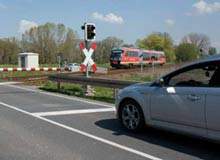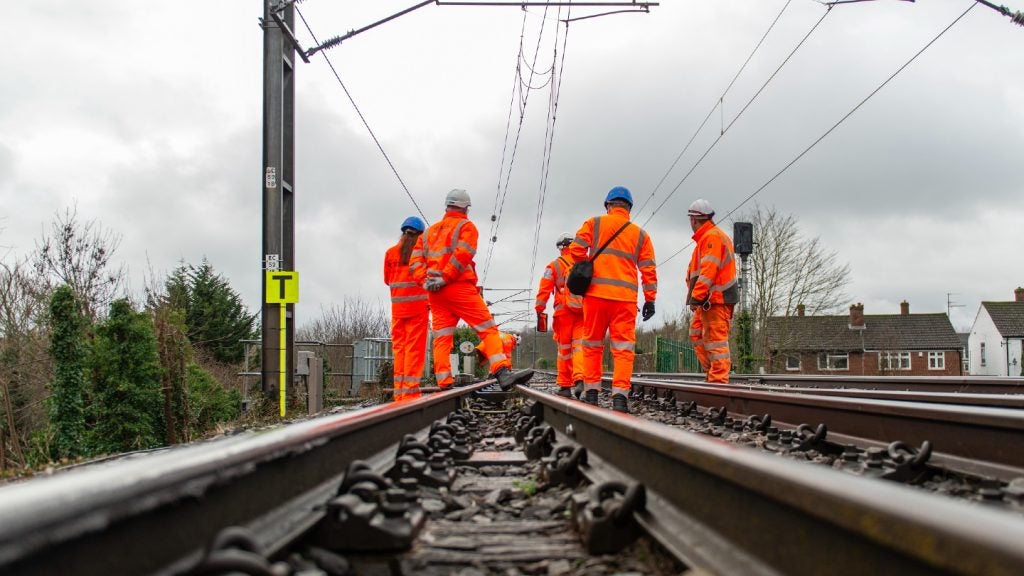
Figures published in March 2010 by UK rail operator Network Rail revealed that as many as three motorists a week continue to break the law at level crossings, narrowly avoiding a fatal collision with a train. In total, 3,200 incidents of misuse were recorded at level crossings in the UK in 2009.
As a result, Network Rail chief executive Iain Coucher felt compelled to call on the government to do more to curb unsafe driving by motorists at level crossings – an issue which could potentially be supported by new technologies.
Although level crossing technology has continued to evolve over recent decades – adopting a more computerised and centralised approach – an emphasis remains on operational reliability and efficiency as opposed to accounting for incidents of misuse.
This is where companies such as German engineering giant Siemens Mobility can play a role. The company’s Simis LC is marketed as a fail-safe microcomputer system that can easily be adapted to the conditions of individual level crossings and customer-specific requirements.
With the risk of obsolescence running high on level crossing systems worldwide, Siemens has focused intently on compatibility – a point fiercely reiterated by Siemens Mobility’s general manager of signalling John Newton.
See Also:
“The overall aim of the development of the Simis LC was to produce a very modular system which can easily adapt to applications in other countries outside of Germany. The result is a system which can meet any country’s specific requirements, such as warning concepts, barrier operation times (speed profiles) and links to road signalling systems,” Newton says.
How well do you really know your competitors?
Access the most comprehensive Company Profiles on the market, powered by GlobalData. Save hours of research. Gain competitive edge.

Thank you!
Your download email will arrive shortly
Not ready to buy yet? Download a free sample
We are confident about the unique quality of our Company Profiles. However, we want you to make the most beneficial decision for your business, so we offer a free sample that you can download by submitting the below form
By GlobalData“Although the Simis LC is a bespoke system, by using commercial off-the-shelf (COTS) elements, we are making the package as flexible as possible in case of future system migration.
“One of the problems with railways is components in the past have become obsolete very quickly and if a level crossing requires amendment then entire renewal is often the only solution. This modular approach, however, allows for relatively quick changes to the system.”
Regulating level crossing technology
The Simis LC was first installed in Germany in 2000 and there are now more than 400 of the systems in operation nationwide. A further 50 can be found elsewhere in the world, including in Lithuania, Saudi Arabia, Hong Kong, Hungary and Israel.
For each installation a computerised interlocking is provided, which interfaces with existing rail computer systems. The hardware is smaller than previous Siemens models and is designed to provide a more data-rich environment, which can accommodate an increased number of barriers, tracks, and railway and traffic lights. One of the issues facing the system therefore is not size but standards.
“When it comes to installing the Simis LC in Europe, it is generally a case of ensuring our standards comply with the country’s very well-defined standards,” Newton says. “If we go to a less advanced market, then it will generally adopt our standard, which means it is effectively not just buying the kit but the safety standard on which it is based.”
Regulations for level crossings are typically overseen by a country’s road and rail transport authorities and as such could cause potential confusion for suppliers. Newton, however, says he believes such a fact has not proven detrimental to level crossing standards.
“Siemens doesn’t view that as a great barrier because both transport authorities have become enshrined in the way level crossings are specified and constructed,” he explains.
“While not wishing to sound blasé, the crossover is quite universally accepted and the transport regulations on level crossings are coherently integrated between road and railway and therefore straightforward for the supplier.”
Such crossover between rail and road doesn’t stop with level crossing safety regulations. Even within Siemens Mobility there is considerable room for pooling expertise. The Simis LC and adjoining level crossing technology fall under the Rail Automation (Signalling) department of Siemens Mobility, which also has a Traffic Solutions department that provides traffic light controls.
“We are providing the rail and traffic signals for the Edinburgh tram,” Newton says. “As a group we provided extra low voltage traffic lights – which have become the standard in the UK – and extra low voltage tram signals. We effectively applied traffic signal technology to a rail type scenario.”
Tackling level crossing misuse
Looking towards the future of level crossing technology, Newton has news that will bring a smile to the face of Network Rail chief executive Ian Coucher. “In terms of migrating known risks, level crossing technology is fairly well advanced and probably only very small levels of improvements can be made to incremental safety,” he says.
“Siemens is aware, however, that the UK Government is seriously concerned about increasing road user misuse and how to mitigate these types of risk.
“We are exploring a number of developments at the moment, including systems that can detect an object on the crossing that is not related to the railway.
“We are also looking at ways of using existing technology such as CCTV to see if it can be used instead as an object prevention method. Although I’m unable to disclose the full details, it seems likely that this is the direction Siemens and its competitors will be pushing in the future.”





